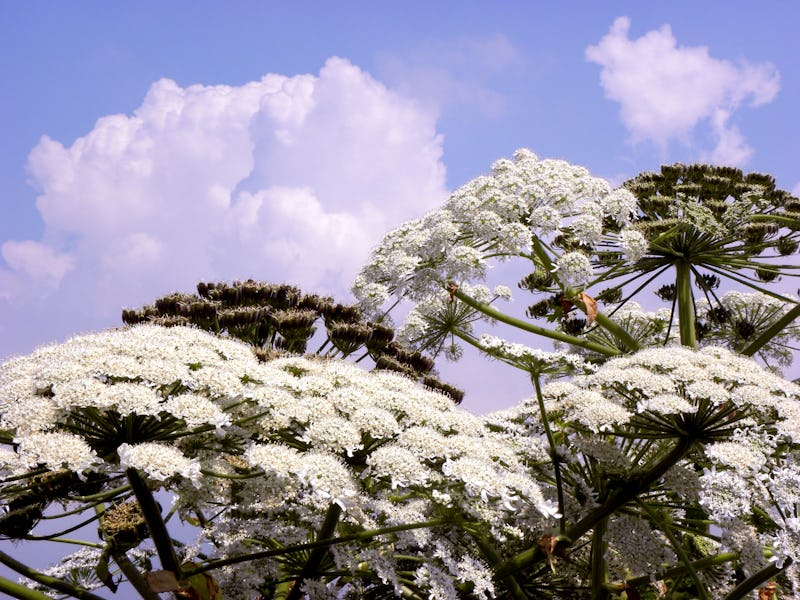Burned Virginia Teen Is a Reminder to Stay The Hell Away From Giant Hogweed
Photos reveal extensive third-degree burns caused by the plant's sap.

Not many plants have emergency hotlines you can call if you happen across them, but giant hogweed, a flesh-burning plant that has been spreading across the U.S., is one of them. This plant is so noxious it can cause permanent blindness, and, as demonstrated by a disastrous incident in Virginia this week, third-degree burns.
On Friday, CBS reported that 17-year-old Alex Childress was on a landscaping job when he only “briefly brushed” a rogue stalk of giant hogweed with his face and arm. But even that small contact still landed him in the burn unit at Virginia Commonwealth hospital, where he is the first patient they’ve ever treated for a hogweed-related injury.
The sap produced by hogweed plants is what makes the plant so dangerous: Even the smallest bit of contact, some say, feels like a cigarette burn. If left untreated, it actually worsens with exposure to sunlight, which is why the New York State Department of Environmental Conservation advises keeping any hogweed-related injuries out of the sun for at least 48 hours. Furocoumarins, the toxic compounds in its sap, are activated by UV rays or sunlight, and when they’re active they bind to DNA inside skin cells, killing them.
“They’re just there to deter herbivores, or, if you want to think of it more dramatically, to punish animals for eating them,” Virginia Tech biologist Jordan Metzgar, Ph.D. told Inverse previously.
Hogweed, which can grow up to 14 feet tall in some cases, first came to the U.S. in 1917 as an ornamental plant. This may be because the giant stalks are topped with nice-looking white flowers, but white flowers are actually signs of a hogweed that’s been ignored for too long. The New York Department of Environmental Protection suggests that once a hogweed plant matures and seeds it’s served it’s reproductive purpose and will die. But by then it’s already released between 20,000 and 100,000 seeds, which makes it critical for experts to recognize hogweed and remove it before flowering happens.
The New York Department of Environmental Conservation's experts know how to handle and identify hogweed. Everyone else should stay they hell away.
It’s for these reasons that states like New York, Pennsylvania and Virginia have all launched emergency reporting hotlines so people can report sightings of hogweed from afar. As tempting as it may be to participate in a state-wide manhunt for giant hogweed, incidents like this one make one thing clear: under no circumstances should the plant be approached. Describing the plant over phone is usually enough to identify it to an expert.